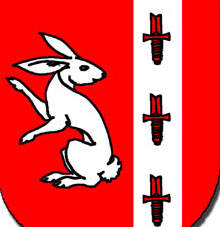I’ve recently picked up a secondhand Lenovo ThinkCentre Tiny PC which ultimately I plan to use as a home server for a variety of functions (media server being the main one) but I don’t need to use it as a main desktop.
It currently has Windows 10 installed. It has a decent sized SSD but no optical drive. I want to install a suitable Linux distro on it. What’s a good Linux distro for my needs? And what’s the best way of doing a scorched earth on the Windows install and replacing it with said distro?
I’m not entirely a Linux noob - I used to work on Xenix and later Red Hat Linux, but that was 30 and 20 years ago respectively!
TrueNas gives you a lot of options and it isn’t too obtuse. I recommend Scale over Core. Avoid it if you only have the one drive as the os won’t share its drive with the rest of the system. Also, while you can use it with only one “storage” drive, it will complain because it uses ZFS and expects you to set up redundency across at least two drives. Might be a hassle for your form factor, but worth a look.
Any. Think-stuff is usually very compliant, and being secondhand you’re not at risk of drivers not being available yet.
Screams Debian tho. Latest version has a very nice installer, and the ability to auto-update security in the background (then politely ask you to reboot)
I have a similar PC. I’m running Fedora on it with KVM/QEMU to host VMs. Basically it’s just one VM with Alpine Linux running a bunch of apps in docker.
If you want GUI, I’d go with Fedora, if it’s CLI only, I’d go with Ubuntu or it’s derivates.
If you like functional programming, you can try NixOS, it has a steep learning curve, but it’s very sweet once you get the hang of it.
Debian. If you don’t have any specific needs, Debian is always the safe bet for an OS that will serve you well
I second this, it’s what I have on my Lenovo M710Q, crazy stable and lightweight.
Same, all my servers run Debian, except for the truenas VM. Even my laptop and gaming PC run Debian lol
I have a ThinkCenter m710q Tiny as my server PC and Linux Mint worked out of the box for features of it. It’s pretty basic as far as hardware goes so any modern Linux distro should work fine.
To wipe Windows, you’ll need a bootable USB drive with a Linux iso burned to it. In the installation process you’ll be given either an option to wipe the existing drive or to manually wipe it and format it as a Linux friendly filesystem. Once that’s done you’ll be able to install fresh on the blank drive.
If you just want a sensible headless server chuck Debian on and forget about it.
I use the Dell equivalent tiny PCs for my app servers. Debian is nice, general purpose, and pretty easy to work with. It runs my entire stack (well, Debian and OpenWRT).
As far as nuking windows, just delete all the partitions on the disk when you’re at the partitioning stage of whatever distro’s installer. Then just make new partitions as you see fit.







